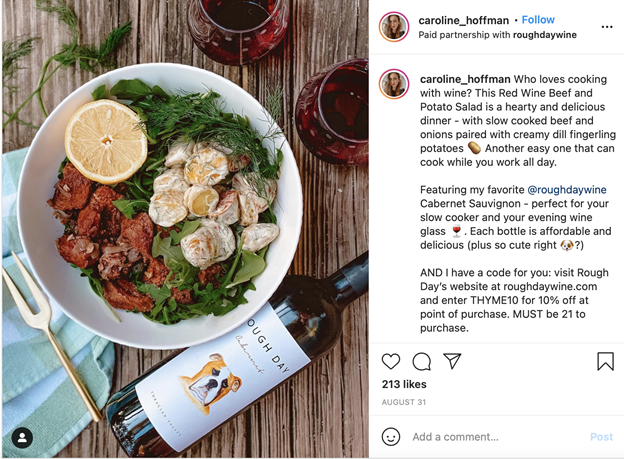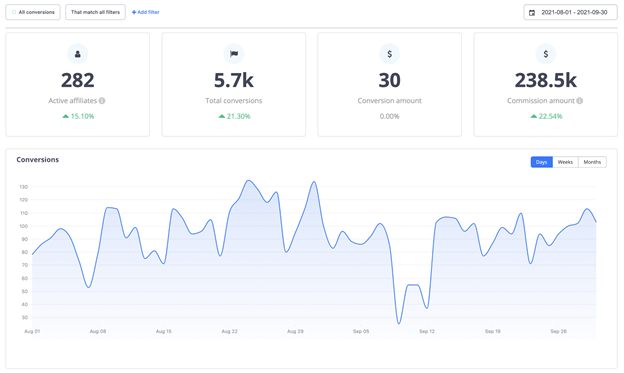Influencer marketing has exploded over the past couple of years. Everyone who’s anyone is using it to promote their brands.
However, some businesses have learned how to run high-impact campaigns at a lower cost.
Enter: Influencer Marketing.
In this article, we will discuss the strategies that can help you optimize your influencer marketing budget while getting greater ROI from your campaigns.
You’ll learn how to:
- Work with four tiers of influencers and take advantage of six different payment models.
- Track the actual influencer-driven orders, clients, and leads.
- Increase ROI of your influencer campaigns.
How To Do Influencer Marketing On A Budget
Influencer marketing is a great way to get results for your brand. While there are several different ways to work with influencers and many types payment models, it’s definitely possible to get great results from influencer marketing with any level of budget.
The key is to find the best solution that completes your goals, build a data-driven campaign that fits within your budget, and track your metrics every step of the way.
A solution like Tapfiliate will allow you to track influencer-driven sales using coupons or referral links.
Go data-driven with your influencer marketing with our free guide on getting and using data to run more impactful campaigns at a lower cost.
Download the free guide: How to do high-impact influencer marketing on a budget.
1. Meet The Four Tiers of Influencers
These days, there are thousands of great influencers on social media, so how do you pick the right influencer for your campaign?
It’s critical to start with knowing the four main types of influencers and how they work with your specific, measurable goals.
The Four Tiers of Influencers:
- Mega Influencer: has 1 million followers on one of their social media platforms.
- Macro Influencer: has a following between 40,000 and 1 million.
- Micro Influencer: has between 1,000–40,000 followers on any one social media platform. They are likely to have a strong niche.
- Nano Influencer: has a smaller following. They are considered absolute experts in their niches. These influencers are pickier about brands they partner with.
Macro, micro, and nano influencers are generally the most affordable; each could potentially deliver results that move the needle.
Read more about how to find key influencers to promote your business.
2. Look For Brand Mentions & Audience Demographics
A good first step to connecting with influencers is to look for brand mentions on social media. A quick search will show you the content creators who are already talking about your brand or products; these individuals can be transformed into great brand marketing tools.
Check through your brand mentions to discover macro, micro, and nano influencers who already talk about your brand and contact them directly. These engaged content creators will be more inclined to want to work with you.
To get the best results for your campaigns, ensure that your future influencer’s audience aligns with your target audience.
Tip: Use a brand monitoring tool, such as Awario and Mention.
3. Create Relationships With Influencers
Skip cold messaging and start by creating relationships with the influencers who fit your goals. Once they are familiar with you and your brand they will be more open to promoting your products.
- Interact with your potential influencers by liking posts and hanging out in the comments.
- Support them by cross-promoting their user-generated content on your social media channels.
- Once you’ve established some rapport with them, begin the conversation around a paid collaboration.
These steps can strengthen your brand relationship, which may lead to larger influencer promotions as their accounts continue to grow.
4. Understand Different Content Types For Your Influencer Campaign
Brand aesthetic is an important consideration when selecting an influencer to promote your product. Each influencer comes with certain content types that work best with their audience.
When you begin working with a paid influencer, you should understand what content type they may propose and how it will align with your goal.
These are the most common influencer content types:
- Product seeding: a brand sends something to an influencer hoping that they will share something positive about it on social media. It is the cheapest option for a brand on a budget. However, not every influencer will share your product.
- Shoutouts: paid brand promotions on social media. An influencer mentions your brand or products on their social media pages. These can include images, videos, and a call to action.
- Competitions: a brand offers the influencer a product to give away to their audience.
 Example of a competition post
Example of a competition post- Sponsored content: a brand pays an influencer to share content. This can either be created by you or by the influencer with the aid of an influencer brief. If the influencer is the one making the content, it will cost you more.
- Takeovers: a well-known influencer “takes over” a brand’s feed for a set period. For example, on Instagram, the influencer would appear in a brand’s stories, posts, or a mix of the two. This would be outlined in your agreement.
- Brand ambassadorships: long-term relationships with influencers, where they promote your product or service to their followers in many posts over an extended period of time.
 Example of a brand ambassadorship
Example of a brand ambassadorshipBe open to each potential content type and track the results to discover which works best with your brand.
5. Understand Different Payment Models
Influencer paid collaborations have different rates and each influencer charges differently. Knowing what each model looks like will help you work with your influencer to discover what works best for your campaign goal and understand how to track your success.
Here is an overview of the most popular payment models:
- Cost per engagement (CPE): You pay a set rate (or cost) per engagement on the post.
- Pay per post: A flat fee per post. This sometimes includes the cost of content creation.
- Flat rates: A dollar amount charged for the whole campaign, regardless of the number of engagements.
- Pay per click: You pay a set amount per click.
- Pay per conversion: You pay a percentage amount of each conversion that was referred by the influencer. Most efficient for brands, as you only pay when you make a sale.
- Hybrid model: A mix of any of these. This model offers the most flexibility for both your business and the influencer. In the example below, the influencer was paid to create the recipe (pay per post) and was given a commission per sale (pay per conversion).

Whatever payment model you use (even if it doesn’t include conversion-based compensation), it is possible to track conversions, customers, or leads that your business acquires per influencer, per campaign, or even per post.

Screenshot from Tapfiliate, Dashboard overview October 2021
Tracking is possible using coupons or referral links, although some companies combine both methods for convenience. Discover how Tapfiliate can help you track your influencer marketing.
6. Estimate & Track Your Return On Investment
Estimating your return on investment is vital before you start. Though there’s no guarantee that a campaign with an influencer will perform, it’s better than going in blind.
Estimate Your Return On Investment
Required Stats:
- The influencer’s average number of views on a piece of content: Scroll through their content to get an idea of how many views their content has. Jot down this number.
- The influencer’s click-through rate: Find out what percentage of people click through from a social media post to a website. If you are unsure, be conservative and start at 1%.
- Your conversion rate: That is the percentage of people who land on your site and go on to buy.
- Your average order value: When someone comes to your site, on average, what do they spend?
An example:
- Let’s say the influencer has on average 6,000 viewers per post.
- This example influencer has a 10% click-through rate. That means that an estimated 600 people will go to your site.
- Your conversion rate is 5% – that means 30 sales out of the 600 people.
- Your average order value is $100.
- Estimated Revenue: $3,000.
- Be sure to subtract the cost of the influencer campaign from the estimated revenue see the true estimated ROI.
- Remember, this initial figure is an estimate, and it could do better or worse than what you expect.
Track Your Actual Return On Investment
Once your campaign is planned out, be sure to set up a tracking platform like Tapfiliate to measure and assess the success of each campaign.
Tracking platforms help you to go in-depth with your data to see how many sales are referred to your website by a specific influencer.
Using these platforms can help you to calculate your ROI and track campaigns to optimize for the future, especially when you’re on a tight budget.
